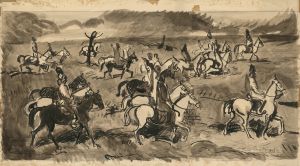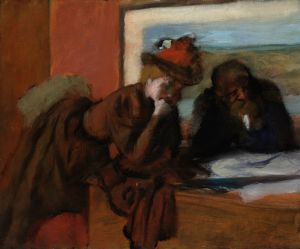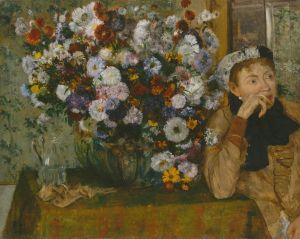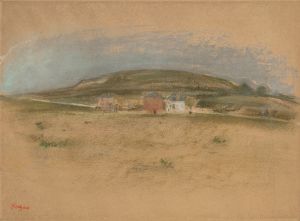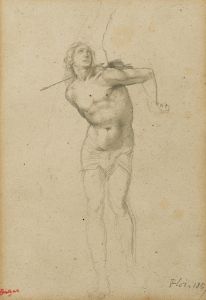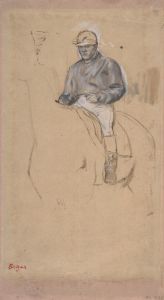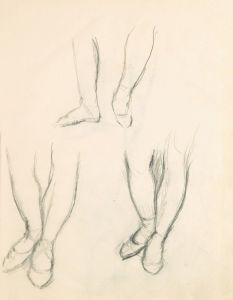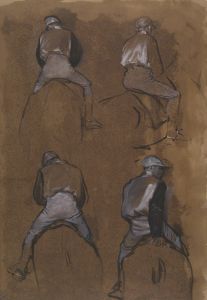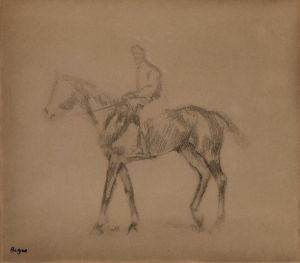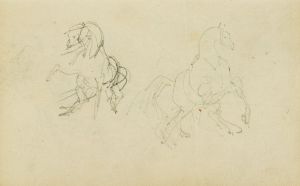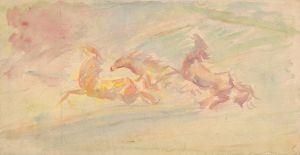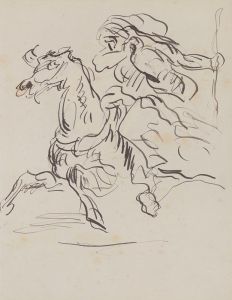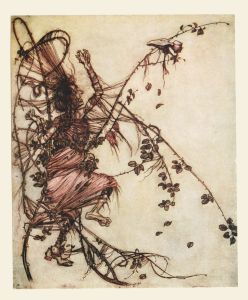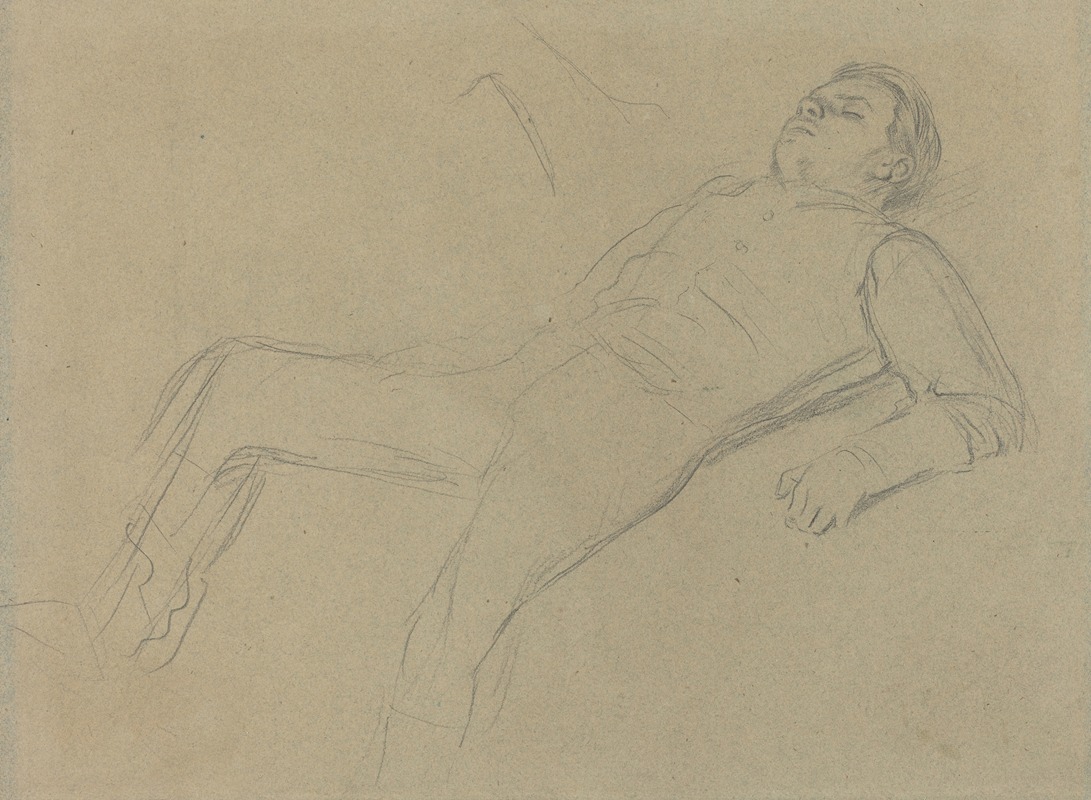
Fallen Jockey II
A hand-painted replica of Edgar Degas’s masterpiece Fallen Jockey II, meticulously crafted by professional artists to capture the true essence of the original. Each piece is created with museum-quality canvas and rare mineral pigments, carefully painted by experienced artists with delicate brushstrokes and rich, layered colors to perfectly recreate the texture of the original artwork. Unlike machine-printed reproductions, this hand-painted version brings the painting to life, infused with the artist’s emotions and skill in every stroke. Whether for personal collection or home decoration, it instantly elevates the artistic atmosphere of any space.
Edgar Degas, a prominent French artist known for his contributions to Impressionism, created "Fallen Jockey II" as part of his exploration of equestrian themes. Degas, born in 1834, was renowned for his innovative compositions and his ability to capture movement, which is evident in his numerous works depicting horses and jockeys. "Fallen Jockey II" is a testament to his fascination with the dynamism and grace of horse racing, a subject he revisited multiple times throughout his career.
The painting "Fallen Jockey II" is a reworking of an earlier piece by Degas, titled "The Fallen Jockey," which he initially completed in 1866. This later version, created around 1881, reflects Degas's evolving style and his continued interest in the theme. The work showcases his skillful use of color and form to convey the energy and tension of the racetrack. Degas's technique often involved layering pastels and oils, which allowed him to achieve a rich texture and depth in his paintings.
In "Fallen Jockey II," Degas captures a dramatic moment on the racetrack. The composition features a jockey who has fallen from his horse, a scene that conveys both the excitement and the inherent risks of horse racing. Degas's attention to detail is evident in the depiction of the horse's musculature and the jockey's attire, highlighting his keen observational skills and his dedication to realism. The painting's dynamic composition draws the viewer's eye across the canvas, emphasizing the movement and chaos of the scene.
Degas's interest in horse racing was part of a broader fascination with modern life and its various spectacles. He often visited racetracks and stables, sketching and observing the interactions between horses and their riders. This firsthand experience informed his work, allowing him to capture the nuances of the sport with authenticity and precision. "Fallen Jockey II" exemplifies Degas's ability to blend realism with a sense of immediacy, creating a vivid portrayal of a fleeting moment.
Throughout his career, Degas was known for his innovative approach to composition and his willingness to experiment with different techniques. His work often defied traditional artistic conventions, and he was a key figure in the development of Impressionism, despite his own ambivalence towards the label. "Fallen Jockey II" reflects his commitment to capturing the essence of movement and his interest in the interplay between humans and animals.
Today, Edgar Degas is celebrated as one of the most influential artists of the 19th century, and his works continue to be studied and admired for their technical mastery and emotional depth. "Fallen Jockey II" remains an important part of his oeuvre, illustrating his enduring fascination with the world of horse racing and his ability to convey the drama and beauty of the sport through his art.





